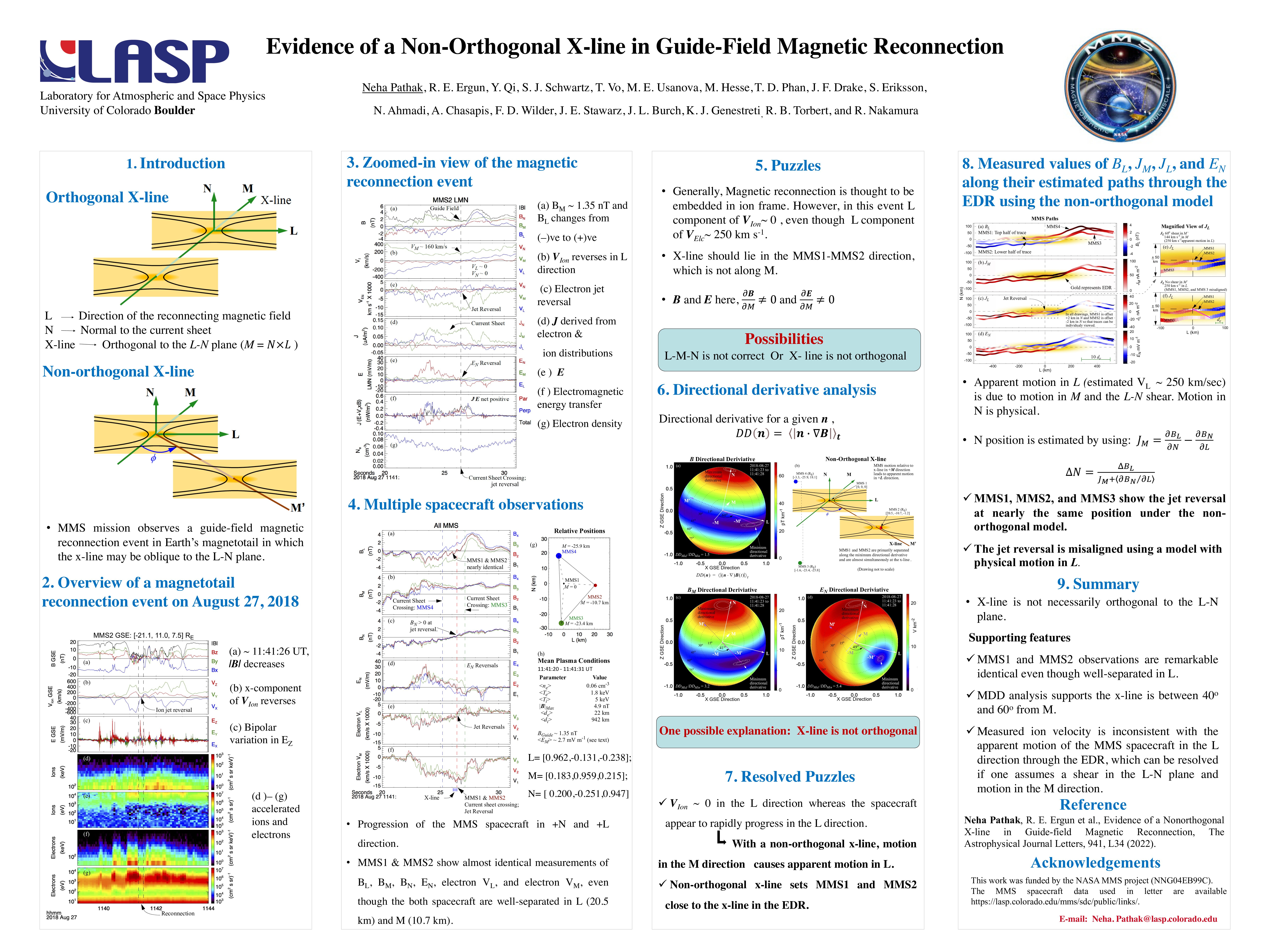Authors: Neha Pathak (Laboratory for Atmospheric and Space Physics, University of Colorado, Boulder, CO, 80303, USA), R. E. Ergun (Laboratory for Atmospheric and Space Physics, University of Colorado, Boulder, CO, 80303, USA), Y.Qi (Laboratory for Atmospheric and Space Physics, University of Colorado, Boulder, CO, 80303, USA), S. J. Schwartz (Emeritus Professor, Imperial College London, London, United Kingdom), T. Vo (Laboratory for Atmospheric and Space Physics, University of Colorado, Boulder, CO, 80303, USA), M. E. Usanova ( Laboratory for Atmospheric and Space Physics, University of Colorado, Boulder, CO, 80303, USA), M. Hesse (NASA Ames Research Center, Moffett Field, CA 94035), T. D. Phan (Space Sciences Laboratory, University of California, Berkeley, CA 94720, USA), J. F. Drake (6University of Maryland, College Park, MD 20742, USA), S. Eriksson (Laboratory for Atmospheric and Space Physics, University of Colorado, Boulder, CO, 80303, USA), N. Ahmadi (Laboratory for Atmospheric and Space Physics, University of C
We will present observations that suggest the x-line of guide-field magnetic reconnection is not necessarily orthogonal to the plane in which magnetic reconnection is occurring. The plane of magnetic reconnection is often referred to as the L-N plane, where L is the direction of the reversing and reconnecting magnetic field and N is normal to the current sheet. The x-line is often assumed to be orthogonal to the L-N plane (defined as the M direction) in the majority of theoretical studies and numerical simulations. The four-satellite Magnetospheric Multiscale (MMS) mission, however, observes a guide-field magnetic reconnection event in Earth’s magnetotail in which the x-line may be oblique to the L-N plane. This finding is somewhat opportune as two of the MMS satellites at the same N location report nearly identical observations with no significant time delays in the electron diffusion region (EDR) even though they have substantial separation in L. A minimum directional derivative analysis, suggests that the x-line is between 40o and 60o from M, adding support that the x-line is oblique. Furthermore, the measured ion velocity is inconsistent with the apparent motion of the MMS spacecraft in the L direction through the EDR, which can be resolved if one assumes a shear in the L-N plane and motion in the M direction. A non-orthogonal x-line, if somewhat common, would call for revisiting theory and simulations of guide-field magnetic reconnection, reexamination of how the reconnection electric field is supported in the EDR, and reconsidering the large-scale geometry of the x-line.


